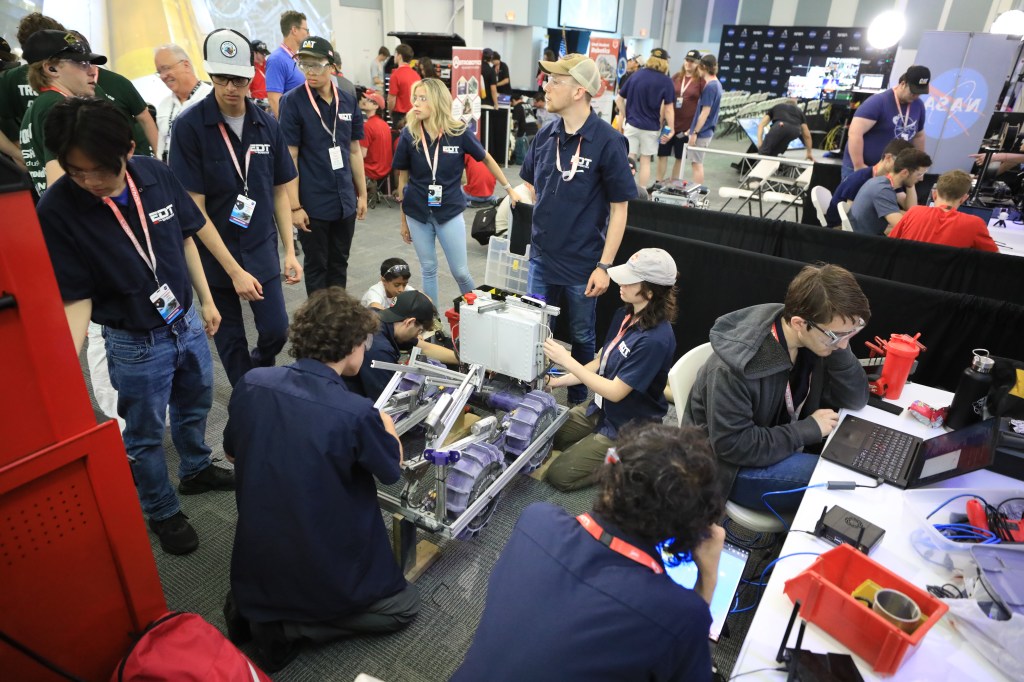Near-Infrared
| PIA Number | PIA02826 |
|---|---|
| Language |
|
These two images, taken by NASA's Cassini spacecraft, show Jupiter in a
near-infrared wavelength, and catch Europa, one of Jupiter's largest
moons, at different phases.
Cassini's narrow-angle camera took both images, the upper one from a
distance of 69.9 million kilometers (43.4 million miles) on Oct. 17, 2000,
and the lower one from a distance of 65.1 million kilometers (40.4 million
miles) on Oct. 22, 2000. Both were taken at a wavelength of 727
nanometers, which is in the near-infrared region of the electromagnetic
spectrum.
The camera's 727-nanometer filter accepts only a narrow spectral range
centered on a relatively strong absorption feature due to methane gas. In
this spectral region, the amount of light reflected by Jupiter's clouds is
only half that reflected in a nearby spectral region outside the methane
band. The features that are brightest in these images are the highest and
thickest clouds, such as the Great Red Spot and the band of clouds girding
the equator, as these scatter sunlight back to space before it has a
chance to be absorbed by the methane gas in the atmosphere. This
stratigraphic effect can be seen even more prominently in an image
released on Oct. 23, 2000, taken in the stronger methane band at 889
nanometers, in which the only bright features are the highest hazes over
the equator, the poles and the Great Red Spot. By comparing images taken
in the 727 nanometer filter with others taken at 889 nanometers and at a
weaker methane band at 619 nanometers, researchers will probe the heights
and thickness of clouds in Jupiter's atmosphere.
Europa, a satellite of Jupiter about the size of Earth's Moon, is visible
to the left of Jupiter in the upper image, and in front of the planet in
the lower image. Another of Jupiter's Galilean satellites, Ganymede, which
is larger than the planet Mercury, is to the right in the upper image,
with brightness variations visible across its surface. In the upper image,
Europa is caught entering Jupiter's shadow, and hence appears as a bright
crescent; in the lower image, it is seen about one-and-a-half orbits
later, in transit across the face of the planet. Because there is neither
methane nor any strong absorber in this spectral region on the surface of
Europa, it appears strikingly white and bright compared to Jupiter.
Imaging observations of the moons Europa, Io and Ganymede entering and
passing through Jupiter's shadow are planned for the two-week period
surrounding Cassini's closest approach on Dec. 30, 2000. The purpose of
these eclipse observations is to detect and measure the variability of
emissions that arise from the interaction of the satellites' tenuous
atmospheres with the charged particles trapped in Jupiter's magnetic field.
At the times these images were taken, Cassini was about 3.3 degrees above
Jupiter's equatorial plane, and the Sun-Jupiter-spacecraft angle was about
20 degrees.
Cassini is a cooperative project of NASA, the European Space Agency and
the Italian Space Agency. The Jet Propulsion Laboratory, a division of the
California Institute of Technology in Pasadena, Calif., manages the
Cassini mission for NASA's Office of Space Science, Washington, D.C.
Credit: NASA/JPL/University of Arizona (PIA02826)
For higher resolution, click here.





























